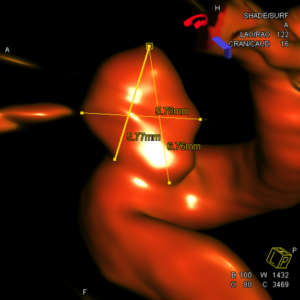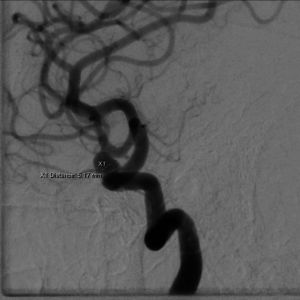About Aneurysms
If you’ve been diagnosed with a cerebral or brain aneurysm, you probably know the condition is caused by a weak or damaged area in a blood vessel where blood collects, creating a sac.
Your neurologist or primary care physician may be concerned that your aneurysm will burst and release blood into the space between your brain and the tissue that covers it.
Called a subarachnoid hemorrhage, a rupture like this requires immediate medical attention because it can quickly become life-threatening. That’s why you’ll be sent for a neurosurgical consultation to determine if a surgical intervention is the best course of treatment for you.
Symptoms of an Aneurysm
In many cases, there are no symptoms associated with a cerebral aneurysm, especially if it’s small. Like most, your aneurysm may have been identified during a test for another condition. However, if your aneurysm ruptures or begins to bleed slowly, symptoms will occur.
You may have experienced aneurysm symptoms like:
- Sudden severe headache
- Dilated pupils
- Blurry or double vision
- Dizziness
- Drooping eyelid
- Trouble balancing
- Pain above and behind your eye
- Weakness and numbness
- Difficulty speaking
- Light sensitivity
- Nausea
- Change in mental status
- Loss of consciousness
In almost all cases, a severe headache will accompany the above mentioned symptoms. If your symptoms suddenly get worse, please seek immediate medical treatment.
Diagnosing Aneurysms
If your primary care physician or neurologist suspected you had an aneurysm, he or she probably sent you to have a diagnostic test called a computer tomography scan or CT scan. To gather more information, you may have also had a catheter cerebral angiography, a test that allows a physician specialized in angiograms to locate blockages, aneurysms, and malformations in your blood vessels using colored dye.
Your doctor may have also looked for blood in your cerebrospinal fluid or ordered an MR to assess your arteries in more detail. These images will also help your neurosurgeon identify the best course of treatment for your brain aneurysm.

3D view of cerebral aneurysm obtained by a rotational angiogram.

Cerebral aneurysm as viewed by a conventional catheter angiogram.
Treatment Options for Aneurysms
Treatment of cerebral aneurysms varies, depending on the shape and location of the problem. In some cases, treatment isn’t necessary at all, and your physician will monitor your condition closely. Medicine like painkillers, anticonvulsants and antifibrinolytic drugs can sometimes be used.
Often, surgical treatment by a neurosurgeon is necessary. The procedure effectively seals off the sac, allowing blood to flow normally through your blood vessels.
The choice of treatment depends on factors such as:
- Your age
- Your health and medical history
- Your risk factors
- Your symptoms
- Your tolerance for specific treatments
- Your opinion or preference
Whatever course of treatment you and your neurosurgeon select, the goal is to decrease the risk of bleeding or to stop the bleeding if it’s already started, thus preserving your brain’s ability to function.
There are two primary types of surgical treatment for brain aneurysms.
Clipping
Clipping has been used for many years to treat aneurysms. During this surgery, your neurosurgeon places a metal clip across the neck of the aneurysm, which prevents blood from flowing into the weak area of your blood vessel. Your neurosurgeon removes a section of your skull to reach the aneurysm and places the clip across its neck. Your skull is sutured together after the aneurysm is clipped.
Coiling
During coiling, your neurosurgeon inserts a tiny platinum coil into the aneurysm. The coil causes the blood in the sac to clot, which prevents blood from entering the sac and restores normal blood flow to your blood vessels. This surgical treatment is endovascular, meaning a catheter is used to deliver the coil to the aneurysm via an artery, so you won’t have an incision in your skull.
Why Choose Neurosurgeons of New Jersey?
Cerebral aneurysms are very complex conditions and should be treated by an experienced neurosurgeon with the skills and expertise required to repair them. As the largest neurosurgery practice in the tri-state area, Neurosurgeons of New Jersey is exceptionally equipped to meet each patient’s unique needs. We combine patient-focused care with cutting-edge technology to ensure our patients achieve excellent outcomes.
